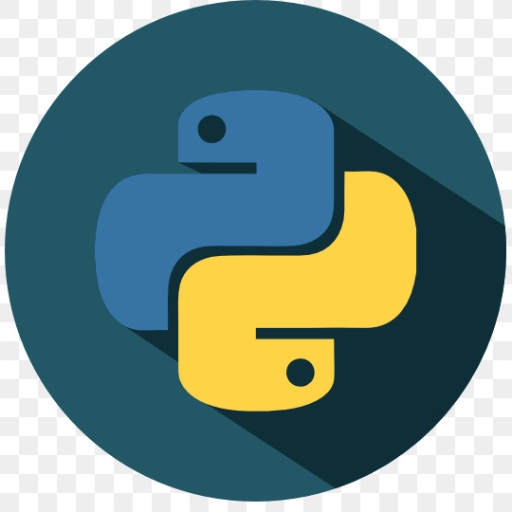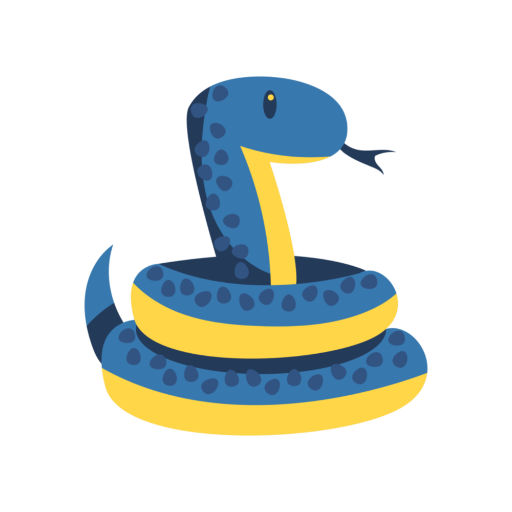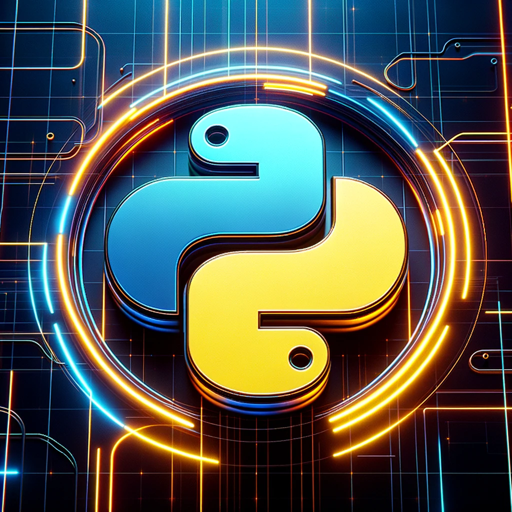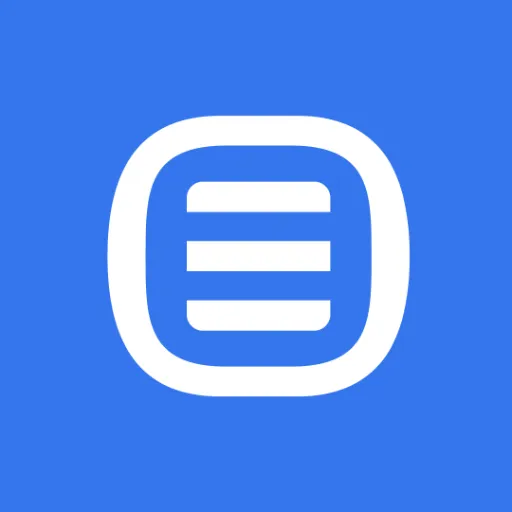Python-AI-Powered Python Assistance
AI-powered tool for Python coding
1) I would like to start a projet. How to start ?
2) How I should structure my project ?
3) Can you help me with the first python file ?
4) Can you test these functions ?
5) Write a readme
6) Help me configure github for this project
Related Tools
Load More
Learn: Python
First steps of learning Python

Python Code Expert
Develop Python applications that are efficient, maintainable, testable, performant, and robust. Excels at OOP design, error handling, documentation, logging, and much more. Includes unit tests written in pytest for all code snippets.
Python Coding Companion
Assists in creating and understanding python applications and scripts.

Python hacker
Autonomous Python hacker expert, handling coding tasks without user input.

Python Tutor
Concise, example-focused Python programming tutor for beginners to intermediates.

Python Expert
Practical Python tutor with a focus on real-world applications and hands-on learning with projects.
20.0 / 5 (200 votes)
Introduction to Python
Python is a high-level, interpreted programming language known for its readability and simplicity. Created by Guido van Rossum and first released in 1991, Python emphasizes code readability with its notable use of significant whitespace. Its syntax allows developers to express concepts in fewer lines of code compared to languages such as C++ or Java. Python is dynamically typed and garbage-collected, supporting multiple programming paradigms, including procedural, object-oriented, and functional programming. Python is widely used in web development, data analysis, artificial intelligence, scientific computing, and automation. For example, Python's simplicity and extensive libraries make it an excellent choice for rapid prototyping of applications, such as developing a web application using the Django framework.

Main Functions of Python
Web Development
Example
Using Django or Flask frameworks
Scenario
A startup company wants to develop a scalable web application quickly. Using Django, they can leverage Python's simplicity and the framework's built-in features like authentication, URL routing, and ORM to expedite the development process.
Data Analysis
Example
Using libraries like Pandas and NumPy
Scenario
A data scientist needs to analyze a large dataset to identify trends and insights. They can use Pandas to manipulate the data easily and NumPy for numerical computations, enabling them to perform complex analyses and visualizations efficiently.
Machine Learning
Example
Using TensorFlow and scikit-learn
Scenario
A research team is developing a predictive model to forecast stock prices. By using TensorFlow, they can build and train deep learning models, while scikit-learn provides tools for simpler machine learning algorithms, data preprocessing, and evaluation.
Ideal Users of Python
Beginners and Students
Python's simple and readable syntax makes it an ideal first language for beginners and students learning to program. Its extensive standard library and supportive community provide ample resources for learning and development.
Data Scientists and Analysts
Python's powerful data manipulation and analysis libraries, like Pandas and NumPy, along with its capabilities in machine learning through TensorFlow and scikit-learn, make it a preferred language for data scientists and analysts. They benefit from its efficiency in data processing and the ease of integrating various data sources.
Web Developers
Web developers benefit from Python's frameworks such as Django and Flask, which enable the rapid development of robust web applications. These frameworks offer built-in functionalities and support for scalability, making Python an excellent choice for web development.
Researchers and Academics
Researchers and academics often use Python for scientific computing and research. Libraries like SciPy and Matplotlib provide tools for mathematical computations and visualizations, supporting the needs of various research fields.

How to Use Python
Visit aichatonline.org
Visit aichatonline.org for a free trial without login, also no need for ChatGPT Plus.
Install Python
Download and install Python from the official website python.org. Ensure to add Python to your system PATH during installation.
Set Up an IDE
Choose and set up an Integrated Development Environment (IDE) such as PyCharm, VSCode, or Jupyter Notebook for writing and testing Python code.
Learn Basic Syntax
Familiarize yourself with Python's basic syntax, data types, and control structures. Online tutorials, courses, and the official Python documentation are valuable resources.
Start a Project
Begin a small project to apply what you've learned. Utilize libraries and frameworks relevant to your project to explore Python's extensive capabilities.
Try other advanced and practical GPTs
Python
Your AI partner for Python programming

Python
AI-powered Python development tool

Python
AI-powered Tool for Python Mastery

画像アイデアを考える君
AI-powered image idea generator.

无限星球模拟器
Explore planets with AI-powered simulations

足球赛事分析师
AI-Powered Football Betting Insights.

Jail Breakinator 2.0
AI-Powered Creativity Unleashed

Jailbreak Me
Unlock the AI, Defy the Code!
Persona Creator
AI-powered buyer persona creation.

Legal Case Brief Assistant
AI-powered tool for effortless case briefing

Brief Bot
AI-powered clarity, always brief.

Oxford English: Grammar Checker, Text Generator
AI-powered English writing enhancer

- Data Analysis
- Automation
- Web Development
- Machine Learning
- Scientific Computing
Python Q&A
What is Python used for?
Python is used for web development, data analysis, artificial intelligence, scientific computing, automation, and more. Its versatility and extensive libraries make it suitable for a wide range of applications.
How do I install Python packages?
You can install Python packages using the pip tool. Open your command prompt or terminal and type `pip install package_name` to install the desired package.
What are some popular Python libraries?
Popular Python libraries include NumPy and pandas for data analysis, TensorFlow and PyTorch for machine learning, Django and Flask for web development, and Matplotlib and Seaborn for data visualization.
How can I debug Python code?
You can debug Python code using tools like PDB (Python Debugger), or IDE-integrated debuggers available in environments such as PyCharm and VSCode. These tools allow you to set breakpoints, step through code, and inspect variables.
What is virtual environment in Python?
A virtual environment in Python is an isolated environment that allows you to manage dependencies separately for different projects. You can create a virtual environment using the `venv` module and activate it to install project-specific packages.